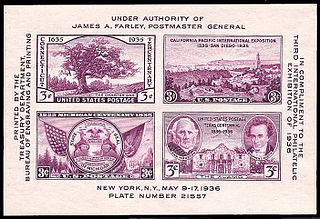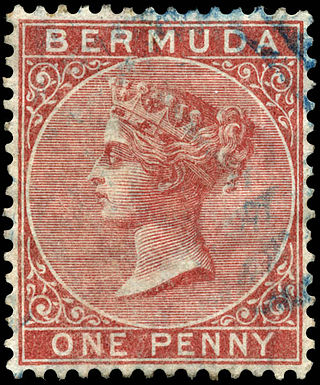
Stamp collecting is the collecting of postage stamps and related objects. It is an area of philately, which is the study of stamps. It has been one of the world's most popular hobbies since the late nineteenth century with the rapid growth of the postal service, as a stream of new stamps was produced by countries that sought to advertise their distinctiveness through their stamps.

Indian postal systems for efficient military and governmental communications had developed long before the arrival of Europeans. When the Portuguese, Dutch, French, Danish and British conquered the Marathas who had already defeated the Mughals, their postal systems existed alongside those of many somewhat independent states. The British East India Company gradually annexed the other powers on the sub-continent and brought into existence a British administrative system over most of modern-day India, with a need to establish and maintain both official and commercial mail systems.
This is a list of philatelic topics.

Gabon is a country in west central Africa sharing borders with the Gulf of Guinea to the west, Equatorial Guinea to the northwest, and Cameroon to the north, with the Republic of the Congo curving around the east and south. Its size is almost 270,000 km² with an estimated population of 1,500,000. The capital and largest city is Libreville.
This is a survey of the postage stamps and postal history of Hong Kong.

A souvenir sheet or miniature sheet is a postage stamp or a small group of postage stamps still attached to the sheet on which they were printed. They may be either regular issues that just happen to be printed in small groups, or special issues often commemorating some event, such as a national anniversary, philatelic exhibition, or government program. The number of stamps ranges from one to about 25; larger sheets of stamps are simply called "sheets" with no qualifier.

The Bicentennial Series was a lengthy series of American commemorative postage stamps.

The postage stamps of Ireland are issued by the postal operator of the independent Irish state. Ireland was part of the United Kingdom of Great Britain and Ireland when the world's first postage stamps were issued in 1840. These stamps, and all subsequent British issues, were used in Ireland until the new Irish Government assumed power in 1922. Beginning on 17 February 1922, existing British stamps were overprinted with Irish text to provide some definitives until separate Irish issues became available. Following the overprints, a regular series of definitive stamps was produced by the new Department of Posts and Telegraphs, using domestic designs. These definitives were issued on 6 December 1922; the first was a 2d stamp, depicting a map of Ireland. Since then new images, and additional values as needed, have produced nine definitive series of different designs.

The postage stamps and postal history of Armenia describes the history of postage stamps and postal systems in Armenia. Czarist Russian postmarks and stamps were in used in the territory of Armenia from 1858. The early postmarks were composed of dots in different shapes. Dated postmarks with city names soon followed. Many counterfeit postmarks are known. From 1909 until 1918 a few Russian stamps were overprinted identifying the Armenian Post. The Armenian letters H & P are intertwined, representing the initials of hai post, the Armenian Post Office.
The first stamps that Canada Post released to commemorate an Olympic event were in commemoration of the 1976 Summer Olympics. This event was held in Montreal. The issue date of these patriotic memorabilia is dated September 20, 1973 and the issue price was 8 cents. It is noteworthy that the issue date coincides with the opening day of the British North America Philatelic Society meeting in Calgary. This is significant because both the design and purpose of this stamp is geared towards the interests of philatelists and all Canadian citizens alike.

Definitive postage stamps of Ireland are the regular series of definitive postage stamps issued by the Irish Free State between 1922 and 1937 and by Republic of Ireland since 1937. Nine distinctly different series of designs have been released; additionally the watermark was changed for two issues and the currency was changed on three occasions while the designs remained the same.

The Castle series or Castle High Value series are two definitive stamp series issued in the United Kingdom during Queen Elizabeth II's reign. The common aspects of the two series are the four chosen castles, one for each country of the United Kingdom.

The postal history of Turkey and its predecessor state, the Ottoman Empire, dates to the 18th century when foreign countries maintained courier services through their consular offices in the Empire. Although delayed in the development of its own postal service, in 1863 the Ottoman Empire became the second independent country in Asia to issue adhesive postage stamps, and in 1875, it became a founding member of the General Postal Union, soon to become the Universal Postal Union. The Ottoman Empire became the Republic of Turkey in 1923, and in the following years, its postal service became more modernized and efficient and its postage stamps expertly designed and manufactured.

The story of Japan's postal system with its postage stamps and related postal history goes back centuries. The country's first modern postal service got started in 1871, with mail professionally travelling between Kyoto and Tokyo as well as the latter city and Osaka. This took place in the midst of the rapid industrialization and social reorganization that the Meiji period symbolized in Japanese history. Given how the nation's railroad technology was in its infancy, Japan's growing postal system relied heavily on human-powered transport, including rickshaws, as well as horse-drawn methods of delivery. For example, while commemorating the 50th anniversary of Japan's postal service, the country's 1921 government released decorative postcards depicting intrepid horseback riders carrying the mail. This however was done to compare postal transport in past and present, as the other card showed modern transportation viz. rail and shipping. The railroad net from the north to the south, Aomori to Nagasaki, was completed in 1889. Prior to 1920s, local delivery was mainly by men- and horsepower, not principally different to Europe.

Bermuda, a group of islands in the North Atlantic Ocean, was previously uninhabited when the British established a settlement in 1612.

Se-tenant stamps or labels are printed from the same plate and sheet and adjoin one another, unsevered in a strip or block. They differ from each other by design, color, denomination or overprint. They may have a continuous design. The word "se-tenant" translates from French as meaning "joined together" or "holding together".

The Postal Union Congress (PUC) £1 stamp is one of a series of postage stamps of Great Britain issued in 1929. It is one of the classics of British philately and has been described as one of the most beautiful British stamps ever issued. The stamp was only the second British commemorative stamp to be issued. The first were the British Empire Exhibition postage stamps of 1924–25.

The 1869 Pictorial Issue is a series of definitive United States postage stamps released during the first weeks of the Grant administration. Ten types of stamp in denominations between one cent and ninety cents were initially offered in the series, with eight of these introduced on March 19 and 20, 1869 and the two greatest values being distributed somewhat later. During May, however, the Post Office began distributing a revised version of the 15-cent stamp, in which the original, poorly aligned frame had been modified ; and collectors consider this eleventh stamp an integral part of the Pictorial Issue. The two 15-cent stamps were assigned separate Scott Catalogue numbers: 118 and 119.

The U.S. Parcel Post stamps of 1912–13 were the first such stamps issued by the U.S. Post Office Department and consisted of twelve denominations to pay the postage on parcels weighing 16 ounces and more, with each denomination printed in the same color of "carmine-rose". Their border design was similar while each denomination of stamp bore its own distinctive image in the center (vignette). Unlike regular postage items, whose rates were determined by weight in ounces, Parcel Post rates were determined and measured by increments in pounds. The new stamps were soon widely used by industry, farmers and others who lived in rural areas. Partly owing to some confusion involving their usage, their exclusive use as Parcel Post stamps proved short lived, as regular postage stamps were soon allowed to be used to pay parcel postage rates.
















